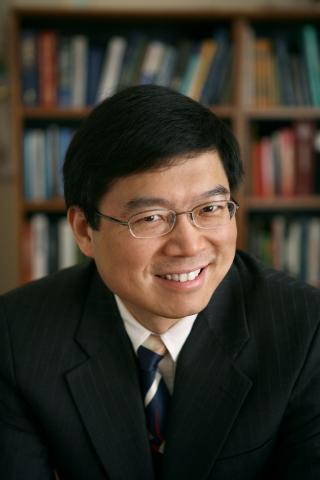Lihong V. Wang, Ph.D., Bren Professor
Andrew and Peggy Cherng Department of Medical Engineering, Department of Electrical Engineering, California Institute of Technology
Seminar Information

We developed photoacoustic tomography (PAT) to peer deep into biological tissue. PAT provides in vivo omniscale functional, metabolic, molecular, and histologic imaging across the scales of organelles through organisms. We also developed compressed ultrafast photography (CUP) to record 70 trillion frames per second, orders of magnitude faster than commercially available camera technologies. CUP can record in real time the fastest phenomenon in nature, namely, light propagation, and can be slowed down for slower phenomena such as neural conduction.
PAT physically combines optical and ultrasonic waves. Conventional high-resolution optical imaging of scattering tissue is restricted to depths within the optical diffusion limit (~1 mm). PAT beats this limit and provides deep penetration at high ultrasonic resolution and high optical contrast by sensing molecules. Broad applications include early-cancer detection and brain imaging. The annual conference on PAT has become the largest in SPIE’s 20,000-attendee Photonics West since 2010.
CUP can image with a single exposure transient events occurring on a time scale down to 10s of femtoseconds. Akin to traditional photography, CUP is receive-only—avoiding specialized active illumination required by other single-shot ultrafast imagers. CUP can be coupled with front optics ranging from microscopes to telescopes for widespread applications in both fundamental and applied sciences, ranging from biology to cosmophysics.
Lihong Wang is Bren Professor of Medical and Electrical Engineering at California Institute of Technology. His book entitled “Biomedical Optics” won the Goodman Book Writing Award. He has published 560 peer-reviewed journal articles and delivered 550 invited talks. His Google Scholar h-index and citations have reached 143 and 85,000, respectively. His laboratory was the first to report functional photoacoustic tomography, 3D photoacoustic microscopy, and CUP (world’s fastest camera). He received the NIH Director’s Pioneer, NIH Director’s Transformative Research, and NIH/NCI Outstanding Investigator awards. He also received the OSA C.E.K. Mees Medal, IEEE Technical Achievement Award, IEEE Biomedical Engineering Award, SPIE Britton Chance Biomedical Optics Award, IPPA Senior Prize, and OSA Michael S. Feld Biophotonics Award. He is a Fellow of AAAS, AIMBE, Electromagnetics Academy, IAMBE, IEEE, NAI, OSA, and SPIE. An honorary doctorate was conferred on him by Lund University, Sweden. He was inducted into the National Academy of Engineering.
